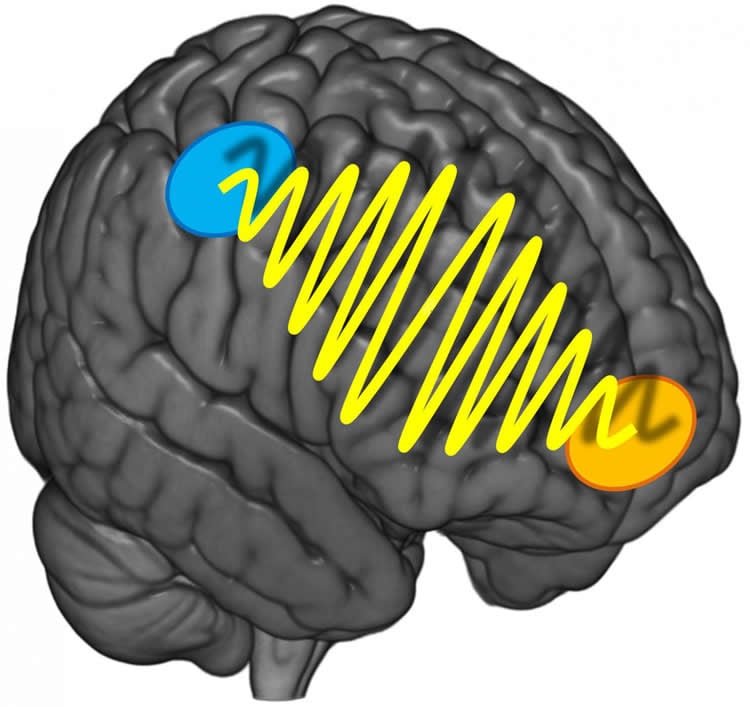Some people find it difficult to make decisions. In a new study, neuroeconomists from the University of Zurich now reveal that the intensity of the communication between different regions of the brain dictates whether we are indecisive or not.
It’s the same old story: You’re in a restaurant and can’t make up your mind what to order. After studying the menu for some time and many discussions, you eventually choose the steak. But you can’t relax during the meal and keep wondering whether you should have gone for the veal after all. Such difficulties with decisions crop up in all aspects of life, not only food. However, they predominantly affect preference-based decisions, i.e. questions like “what do I prefer – melon or cherries?” Purely sensory decisions based on sensorial information such as “what is bigger – melon or cherry?” are less prone to indecisiveness.
The more intensive the information flow, the more decisive
How come some people are so uncertain of their preferences and keep making new choices while others know exactly what they like and want? A team headed by Professor Christian Ruff, a neuroeconomist from the University of Zurich, set about investigating this question. The Zurich researchers discovered that the precision and stability of preference decisions do not only depend on the strength of the activation of one or more brain regions. Instead, the key for stable preference choices is the intensity of the communication between two areas of the brain which represent our preferences or are involved in spatial orientation and action planning.
The researchers used transcranial alternating current stimulation, a non-invasive brain stimulation method that enables generation of coordinated oscillations in the activity of particular brain regions. The test subjects did not realize that they were being stimulated. Using this technique, the researchers intensified or reduced the information flow between the prefrontal cortex located directly below the forehead and the parietal cortex just above both ears. The test subjects had to make preference-based or purely sensory decisions about food.

“We discovered that preference-based decisions were less stable if the information flow between the two brain regions was disrupted. Our test subjects were therefore more indecisive. For the purely sensory decisions, however, there was no such effect,” explains Ruff. “Consequently, the communication between the two brain regions is only relevant if we have to decide whether we like something and not when we make decisions based on objective facts.” There was no evidence of any gender-specific effects in the experiments.
It was not possible to make the decisions more stable by intensifying the information flow. However, the study participants were young, healthy test subjects with highly developed decision-making skills. On the other hand, the results of the study could be used for therapeutic measures in the future – such as in patients who suffer from a high degree of impulsiveness and indecisiveness in the aftermath of brain disorders.
Source: Dr. Christian Ruff – University of Zurich
Image Source: The image is credited to UZH
Original Research: Full open access research for “The precision of value-based choices depends causally on fronto-parietal phase coupling” by Rafael Polana, Marius Moisa, Alexander Opitz, Marcus Grueschow and Christian C. Ruf in Nature Communications. Published online August 20 2015 doi:10.1038/ncomms9090
Abstract
The precision of value-based choices depends causally on fronto-parietal phase coupling
Which meal would you like today, chicken or pasta? For such value-based choices, organisms must flexibly integrate various types of sensory information about internal states and the environment to transform them into actions. Recent accounts suggest that these choice-relevant processes are mediated by information transfer between functionally specialized but spatially distributed brain regions in parietal and prefrontal cortex; however, it remains unclear whether such fronto-parietal communication is causally involved in guiding value-based choices. We find that transcranially inducing oscillatory desynchronization between the frontopolar and -parietal cortex leads to more inaccurate choices between food rewards while leaving closely matched perceptual decisions unaffected. Computational modelling shows that this exogenous manipulation leads to imprecise value assignments to the choice alternatives. Thus, our study demonstrates that accurate value-based decisions critically involve coherent rhythmic information transfer between fronto-parietal brain areas and establishes an experimental approach to non-invasively manipulate the precision of value-based choices in humans.
“The precision of value-based choices depends causally on fronto-parietal phase coupling” by Rafael Polana, Marius Moisa, Alexander Opitz, Marcus Grueschow and Christian C. Ruf in Nature Communications. Published online August 20 2015 doi:10.1038/ncomms9090






